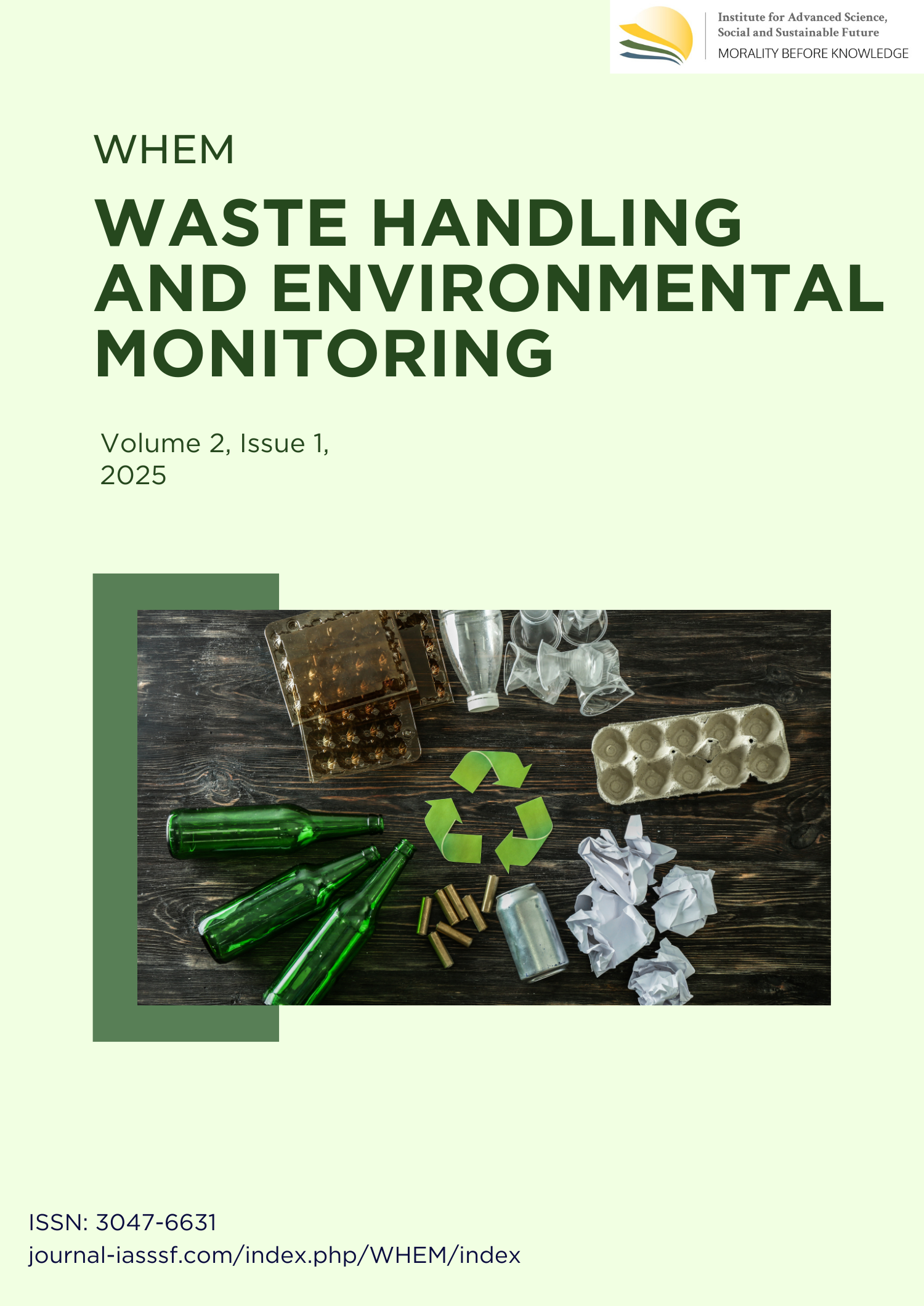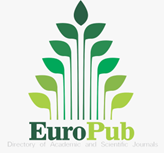Assessing plastic waste management performance: Insights from the waste management performance index
DOI:
https://doi.org/10.61511/whem.v2i1.2025.1320Keywords:
plastic waste, Waste Management Performance Index (IKPS), Central JakartaAbstract
Background: In 2015, Indonesia was the second-largest contributor to marine debris worldwide, with an estimated 0.48-1.29 million metric tons of marine waste. In Jakarta, the marine waste generation reached 303.6 tons per day. Government programs such as JAKSTRADA and JAKSTRANAS aim to reduce plastic waste by 30% and manage 70% of waste by 2025. These policies promote circular economy-based waste management, but household participation remains low, with only 1.6% contributing to the 3R (reduce, reuse, recycle). Methods: This study employs both quantitative and qualitative approaches to measure the performance of circular economy-based plastic waste management in Jakarta. The population includes both formal and informal sectors, such as waste banks and waste pickers. Data is analyzed using the Waste Management Performance Index (IKPS) from SIPSN and BPS, comparing plastic waste management achievements with JAKSTRADA targets up to 2025. Findings: In Jakarta, per capita waste generation is 0.7 kg/day, mainly organic and plastic. Despite a decline in collected waste, plastic waste is rising. Management follows Law No. 18/2008 and Presidential Regulation No. 97/2017, involving formal (TPS 3R, waste banks) and informal (collectors, vendors) sectors. The informal sector aids recycling by collecting plastic from inaccessible areas. JAKSTRADA targets waste reduction, handling, and recycling until 2025. The Waste Management Performance Index (IKPS) evaluates policy, effectiveness, and efficiency. Conclusion: Waste management in Central Jakarta is still low with an index of 26% and a recycling rate of 12.6%, despite achieving 99.98% of the collaboration target. Novelty/Originality of this article: This study highlights the integration of formal and informal sectors in plastic waste management in Central Jakarta, emphasizing the use of the Waste Management Performance Index (IKPS) to assess policy effectiveness and recycling progress toward JAKSTRADA targets.
References
Abdoli, M. A., Rezaei, M., & Hasanian, H. (2016). Integrated solid waste management in megacities. Global Journal of Environmental Science and Management, 2(3), 289–298. https://doi.org/10.7508/gjesm.2016.03.008
Acosta-Coley, I., Duran-Izquierdo, M., & Rodriguez-Cavallo, E. (2019). Quantification of microplastics along the Caribbean coastline of Colombia: Pollution profile and biological effects on Caenorhabditis elegans. Marine Pollution Bulletin, 146, 574–583. https://doi.org/10.1016/j.marpolbul.2019.06.084
Alpizar, F., Carlsson, F., Lanza, G., Carney, B., Daniels, R. C., Jaime, M., Ho, T., Nie, Z., Salazar, C., Tibesigwa, B., & Wahdera, S. (2020). A framework for selecting and designing policies to reduce marine plastic pollution in developing countries. Environmental Science & Policy, 109, 25–35. https://doi.org/10.1016/j.envsci.2020.04.007
Bianchini, A., & Rossi, J. (2021). Design, implementation and assessment of a more sustainable model to manage plastic waste at sport events. Journal of Cleaner Production, 281, 125345. https://doi.org/10.1016/j.jclepro.2020.125345
Bing, X., de Keizer, M., Bloemhof-Ruwaard, J. M., & van der Vorst, J. G. A. J. (2014). Vehicle routing for the eco-efficient collection of household plastic waste. Waste Management, 34(4), 719–729. https://doi.org/10.1016/j.wasman.2014.01.018
BPS Provinsi DKI Jakarta. (2021). Volume sampah yang terangkut per hari menurut jenis sampah di Provinsi DKI Jakarta 2019–2021. Badan Pusat Statistik Provinsi DKI Jakarta. https://jakarta.bps.go.id/
BPS Provinsi DKI Jakarta. (2023). Persentase komposisi sampah di Provinsi DKI Jakarta 2020–2022. Badan Pusat Statistik Provinsi DKI Jakarta. https://jakarta.bps.go.id/indicator/152/572/1/persentase-komposisi-sampah-di-provinsi-dki-jakarta.html
Brotosusilo, A., & Handayani, D. (2020). Dataset on waste management behaviors of urban citizens in large cities of Indonesia. Data in Brief, 30, 106053. https://doi.org/10.1016/j.dib.2020.106053
Chau, M. Q., Hoang, A. T., Truong, T. T., & Phuong, X. (2020). Endless story about the alarming reality of plastic waste in Vietnam. Energy Sources, Part A: Recovery, Utilization, and Environmental Effects, 1–9. https://doi.org/10.1080/15567036.2020.1802535
Clayton, C. A., Walker, T. R., Carlos, J., & Adam, I. (2021). Policy responses to reduce single-use plastic marine pollution in the Caribbean. Marine Pollution Bulletin, 162, 111833. https://doi.org/10.1016/j.marpolbul.2020.111833
Conlon, K. (2020). Adaptive injustice: Responsibility to act in the plastics economy. Resources, Conservation & Recycling, 153, 104563. https://doi.org/10.1016/j.resconrec.2019.104563
Cordova, M. R., Riani, E., & Shiomoto, A. (2020). Microplastics ingestion by blue panchax fish (Aplocheilus sp.) from Ciliwung Estuary, Jakarta, Indonesia. Marine Pollution Bulletin, 161, 111763. https://doi.org/10.1016/j.marpolbul.2020.111763
DLH Provinsi DKI Jakarta. (2021). Ringkasan eksekutif dokumen informasi kinerja pengelolaan lingkungan hidup daerah Provinsi DKI Jakarta tahun 2021. Dinas Lingkungan Hidup Provinsi DKI Jakarta. https://dlh.jakarta.go.id/
Ellen MacArthur Foundation. (2016). The new plastics economy: Rethinking the future of plastics. https://ellenmacarthurfoundation.org/the-new-plastics-economy
Emmerik, T. van, Loozen, M., van Oeveren, K., Buschman, F., & Prinsen, G. (2019). Riverine plastic emission from Jakarta into the ocean. Environmental Research Letters, 14(8), 084033. https://doi.org/10.1088/1748-9326/ab30e8
Honingh, D., van Emmerik, T., Uijttewaal, W., Kardhana, H., & Hoes, O. (2020). Urban river water level increase through plastic waste accumulation at a rack structure. Frontiers in Earth Science, 8, 28. https://doi.org/10.3389/feart.2020.00028
Islam, A., Karmakar, P., Hoque, M., & Roy, S. (2021). Appraisal of public awareness regarding plastic waste in the Tangail Municipality, Bangladesh. International Journal of Environmental Studies, 78(6), 900–913. https://doi.org/10.1080/00207233.2020.1861916
Jambeck, J. R., Geyer, R., Wilcox, C., Siegler, T. R., Perryman, M., Andrady, A., Narayan, R., & Law, K. L. (2015). Plastic waste inputs from land into the ocean. Science, 347(6223), 768–771. https://doi.org/10.1126/science.1260352
KLHK. (2020). Pedoman perhitungan Indeks Kinerja Pengelolaan Sampah. Kementerian Lingkungan Hidup dan Kehutanan. https://sipsn.menlhk.go.id/
KLHK. (2021). Indeks kinerja pengelolaan sampah. Kementerian Lingkungan Hidup dan Kehutanan. https://sipsn.menlhk.go.id/
Klundert, A. van de, & Anschütz, J. (2001). Integrated sustainable waste management: The concept (A. Scheinberg, Ed.). WASTE.
Korhonen, J., Honkasalo, A., & Seppälä, J. (2018). Circular economy: The concept and its limitations. Ecological Economics, 143, 37–46. https://doi.org/10.1016/j.ecolecon.2017.06.041
Kumar, A., & Agrawal, A. (2020). Recent trends in solid waste management status, challenges, and potential for the future Indian cities—A review. Current Research in Environmental Sustainability, 2, 100011. https://doi.org/10.1016/j.crsust.2020.100011
Kuncoro, B., Indradi, A., & Rita, O. (2022). Microplastic pollution in Rawa Jombor Reservoir, Klaten, Central Java, Indonesia: Accumulation in aquatic fauna, heavy metal interactions, and health risk assessment. Water, Air, & Soil Pollution, 233(112). https://doi.org/10.1007/s11270-022-05572-2
Lebreton, L. C. M., van der Zwet, J., Damsteeg, J., Slat, B., Andrady, A., & Reisser, J. (2017). River plastic emissions to the world’s oceans. Nature Communications, 8, 15611. https://doi.org/10.1038/ncomms15611
Minderoo Foundation. (2021). Plastic waste makers index 2021. Minderoo Foundation. https://www.minderoo.org
Mutia, A. (2022). The Environmental Performance Index (EPI) 2022. Katadata Media Network. https://databoks.katadata.co.id/datapublish/2022/11/08/daftar-negara-asean-paling-ramah-lingkungan-ri-urutan-3-terbawah
Palm, J., & Karolina, S. (2021). The role of local governments in overcoming barriers to industrial symbiosis. Cleaner Environmental Systems, 2, 100014. https://doi.org/10.1016/j.cesys.2021.100014
Phelan, A., Ross, H., Setianto, N. A., Fielding, K., & Pradipta, L. (2020). Ocean plastic crisis—Mental models of plastic pollution from remote Indonesian coastal communities. PLoS ONE, 15(7), e0236149. https://doi.org/10.1371/journal.pone.0236149
Purba, N. P., Handyman, D. I. W., Pribadi, T. D., Syakti, A. D., Pranowo, W. S., Harvey, A., & Ihsan, Y. N. (2019). Marine debris in Indonesia: A review of research and status. Marine Pollution Bulletin, 146, 134–144. https://doi.org/10.1016/j.marpolbul.2019.05.057
Purparisa, Y. (2019). Jumlah sampah plastik sekali pakai per kapita di Asia Tenggara (2019). Katadata Media Network. https://databoks.katadata.co.id/datapublishembed/120387
Rousta, K., Zisen, L., & Hellwig, C. (2020). Household waste sorting participation in developing countries—A meta-analysis. Recycling, 5(1), 6. https://doi.org/10.3390/recycling5010006
Sari, M. M., Inoue, T., Harryes, R. K., Suryawan, I. W. K., & Yokota, K. (2021). Potential of recycle marine debris in Pluit Emplacement, Jakarta to achieve sustainable reduction of marine waste generation. International Journal of Sustainable Development and Planning, 17(1), 119–125. https://doi.org/10.18280/ijsdp.170112
Schlehe, J., & Yulianto, V. I. (2020). An anthropology of waste: Morality and social mobilisation in Java. Indonesia and the Malay World, 48(141), 68–89. https://doi.org/10.1080/13639811.2019.1654225
Schmidt, C., Krauth, T., & Wagner, S. (2017). Export of plastic debris by rivers into the sea. Environmental Science & Technology, 51(21), 12246–12253. https://doi.org/10.1021/acs.est.7b02368
Sekito, T., Matsuyama, A., Budi, T., & Yutaka, P. (2020). Factors influencing the period of participation in a waste bank system in Malang City, Indonesia. Journal of Material Cycles and Waste Management, 22(5), 1614–1619. https://doi.org/10.1007/s10163-020-01049-8
Sembiring, E., & Fareza, A. A. (2020). The presence of microplastics in water, sediment, and milkfish (Chanos chanos) at the downstream area of Citarum River, Indonesia. Water, Air, & Soil Pollution, 231(355). https://doi.org/10.1007/s11270-020-04710-y
SIPSN. (2022). Fasilitas pengelolaan sampah: TPA/TPST. Sistem Informasi Pengelolaan Sampah Nasional. https://sipsn.menlhk.go.id/sipsn/public/home/fasilitas/tpa-tpst
SIPSN. (2023). Data capaian kinerja pengelolaan sampah DKI Jakarta tahun 2022. Sistem Informasi Pengelolaan Sampah Nasional. https://sipsn.menlhk.go.id/sipsn/public/data/capaian
Takarina, N. D., Purwiyanto, A. I. S., Rasud, A. A., Arifin, A. A., & Suteja, Y. (2022). Microplastic pollution in Indonesian waters and marine biota: A review. Global Journal of Environmental Science and Management, 8(2), 183–196. https://doi.org/10.22034/gjesm.2022.02.03
World Bank Group, Kementerian Koordinasi Bidang Kemaritiman, & Royal Norwegian Embassy. (2018). Indonesia marine debris hotspot rapid assessment. World Bank. https://documents.worldbank.org/en/publication/documents-reports/documentdetail/
Zakianis, Sabarinah, & Djaja, I. M. (2017). The importance of waste management knowledge to encourage household waste-sorting behaviour in Indonesia. International Journal of Waste Resources, 7(4), 1000309. https://doi.org/10.4172/2252-5211.1000309
Downloads
Published
How to Cite
Issue
Section
Citation Check
License
Copyright (c) 2025 Anindita Prabawati, Evi Frimawaty

This work is licensed under a Creative Commons Attribution 4.0 International License.

















